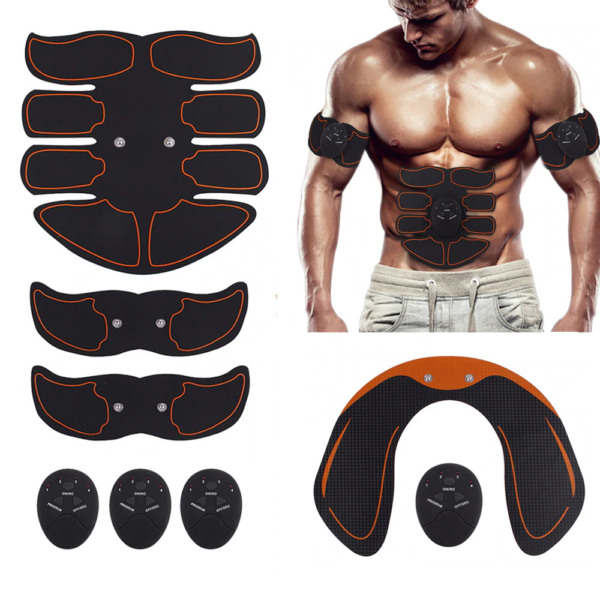
Shopify Paypal and dropshipping have become a real nightmare for many online stores. Paypal is one of the most popular payment processors used by millions of online stores.
A payment processor is a 3rd party service that collects payments from your customers in a secure and encrypted environment. This ensures that both you and your customers are protected.
In short, the way a payment processor works is that your customer pays Paypal and then Paypal pays you – and they take a fee of course. And they get to make the rules – without really telling you exactly what the rules are 😉
Shopify and Paypal was a match made in heaven for so many online stores. While Shopify comes ready with its own payment processor it is only available in a few selected countries.
While Shopify integrates with a lot of 3rd party payment processors the options for many countries are still incredibly limited.

Stripe offers a lot more options and is by far the most popular option for credit card purchases.
In some countries the only real option is Paypal. Some choose Paypal because it is the only option while others prefer Paypal over anything else.
Paypal or Stripe? Or Both? When Dropshipping
The general consensus is that if you have the option to offer both Shopify and Paypal then you should. The reason for this is that many people in the USA, Uk, Canada and Australia prefer Paypal as their payment option online.
This largely stems from the early days of ecommerce where shopping online was a lot more risky. Paypal helped to mitigate this risk by offering a very robust security system and post purchase protection for buyers.
Paypal also makes it very easy to make and receive payments via email and is a really great tool for everyday use online.
As for ecommerce and Shopify store owners, Paypal is a bit more temperamental. There is no doubt that Paypal is primarily there to serve buyers and many merchants want to do nothing but nuke Paypal.
Paypal is most certainly not dropshipping friendly.
Not because they dislike dropshipping. In fact, they could not care less whether you are dropshipping or not. It is important to understand this because they are not out to “get” dropshippers.
Paypal wants to protect themselves and the buyers who are their main “clients”. Businesses are often at the short end and often run into trouble with Paypal.
If you run a Shopify store that ship products from the USA to customers in the USA and you offer fast shipping and receive virtually no chargebacks or have virtually no refunds then Paypal will love you.
You will probably have no issues at all.
If you are dropshipping from China then you will most likely run into issues with Paypal at some stage. High refund rates, lots of chargebacks and lots of disputes will gte your account locked at some stage.
So, then the question whether you should even bother using Paypal? Should you just stick to Stripe or Shopify Payments?
Offering Paypal AND Stripe (or Shopify Payments) is proven to yield the best conversion rate. This allows people who will only buy using Paypal to shop with confidence. It also allows more traditional card payments that many others prefer.
By covering all these bases you can be sure to allow the maximum amount of options for customers to check out.
A really important point regarding Paypal payments is that it allows people who do not have credit cards to buy from your store.
Many people with no credit rating or younger people do not have credit cards.
If your store serves a younger demographic then not offering Paypal payments of Shopify is a big mistake.
What If I Can Only Use Paypal?
Paypal gives you the opportunity to let anyone with a Paypal account buy from your Shopify store. But what about people who do not have a Paypal account?
This is where Paypal Express comes in. With Paypal Express you can let customers check out on your store through Paypal without a Paypal account and by using a credit card as they would for Stripe.
This allows you to only use Paypal on your Shopify store and still cover all bases of both Paypal accounts and credit card purchases.
So, why then bother with offering Stripe and Paypal?
It comes down to risk management. If Paypal decides to shut you down then you are screwed and you have no business.
How To Avoid Paypal Bans and Frozen Funds When Dropshipping
If you’ve been dropshipping for a while then you most probably heard about the issues involved with dropshipping and Paypal.
I’ve already mentioned some of the major issues like refund rates and disputes but there’s actually a lot more to it.
Paypal wants to minimize risk. They want to minimize risk to themselves and to their users.

Dropshipping represents a lot of risk to them because customers have to wait so long to receive parcels and that often leads to disputes, chargebacks and refunds.
So, if you are dropshipping, what can you do to minimize and even avoid all Paypal issues altogether?
Here are the 8 most important things you can do to avoid a Paypal ban or frozen fees.
1.Do not sell crap
The easiest way to get your funds frozen in Paypal or get your Paypal account banned is to sell crap products. There is a lot of crap coming from China and if you are not careful you could fall into this category without even knowing it.
The best practice is to always order the product(s) before you start selling it – or at least before you start scaling.

There’s nothing worse than having a “winning product” that is pure crap. People will request refunds and you will have to refund them. It is as simple as that.
2.Be very transparent about shipping times
The number one reason why customers file disputes on Paypal is because of slow shipping times. Some will go straight for a chargeback request.
It is really important that you be as transparent as possible regarding your shipping times. Do not sugar coat it. Make it clear that your average shipping times will be 2 to 3 weeks if that is the case.
It is wise to also include this in your order confirmation emails and on your store’s tracking page.

You also have to explore shipping options. ePacket is no longer a “fast” shipping option from China. Look into warehousing, different shipping lines or getting a shipping agent.
This will vastly improve your chances of steering clear of the Paypal ban hammer.
3.Offer great customer service and be responsive
You need to make sure that you answer your customers quickly – before they get spooked and start contacting Paypal. Most people are still very skeptical; about online shopping with a fear of being “scammed”.
By responding to customer emails within 24hours you can help ease their concerns. If you don’t they will probably head over to Paypal.
Every dispute filed in Paypal is a mark against your account. You want to limit this as much as possible and you can do this by responding quickly to customer emails.
It is also highly recommended that you have a live chat on your store to answer customers immediately if possible.
4.Avoid refunds as much as possible
When customers request a refund you have to offer it to them in accordance with your refund policy. In short, if a customer wants to return a product then you should allow that.
While you are obliged to offer refunds, there are certain measures that can limit the amount of refunds you issue. Remember that every refund is a mark against your account.
Try offering customers store credit instead of a refund. Sweeten the deal as much as possible to avoid the refund.
5.Respond to Paypal disputes asap
When someone files a dispute with Paypal you need to respond quickly. Even when a customer contacts you through Paypal you need to respond quickly. Do not let it sit for days as that looks bad when Paypal gets involved in the dispute.
Many Paypal shoppers will not even bother to contact your customer support. They will go straight to Paypal because they are “ready for a fight”.
Always be UBER professional in your responses to customers – both through your store’s official contact and through Paypal.
Stick to your policies and do not get sucked into arguments. Whether you like it or not, the customer is always right.
6.Post tracking numbers to Paypal
This is something that very few dropshippers do and it is by far the best way to limit the risks you run with Paypal.
Posting tracking numbers back to Paypal can be incredibly time consuming and is the main reason why no one is doing it.

Thankfully, there’s an app for that.
Trackipay will do all this for you. You can just set it up once and it will take care of all your tracking numbers and post them all back to Paypal without you having to do anything.
7.Don’t keep large amounts of money sitting in Paypal
One of Paypal’s “tricks” is to hold a percentage of you funds and not allow you to withdraw it for up to 60 days. This could completely cripple your business if you have large amounts of money sitting in your Paypal account.
Make it a habit to withdraw your funds regularly. When your refund rates, chargeback rates or even shipping times is too long then it will trigger Paypal to freeze your funds.
This is not too bad. It can get worse and they can shut you down completely if your refunds and/or chargebacks reach a certain threshold.
8.Avoid Huge Sales Spikes
Going from selling $0 to $50k worth of products from one day to the next is a big red flag for Paypal. This is especially true for new accounts.
This is a telltale sign of someone who switched to a new Paypal account that was previously banned.
Aged accounts have more trust with Paypal and far less likely to get banned instantly.
If you rely solely on Paypal payments for Shopify then you need to always have a backup account. If you can run small amounts of sales to it on the side then even better because that will allow the backup account to build some trust over time.
Shopify Paypal Integration – Setting up Paypal for Shopify
The first step is to create a business account in Paypal. You need to do this the right way. DO NOT use fake information. Use your registered business name and address and do this properly.

In most countries you can set up a small business for free. Do that and use that information for your Paypal business account.
You will need to confirm your account via a linked bank account and a phone number.
Once you’ve got this set up you can link your Paypal account to Shopify. It is a really simple process where you simply need to log into the Paypal, account from within Shopify.
How To Add Paypal To Shopify
In Shopify, Click Settings >> Payment Providers

Scroll Down to the Paypal section and click on “Activate Paypal Express Checkout”

You will then be taken to the Paypal site where you need to fill in your credentials and log in.
Once you’ve done that you will taken back to Shopify and your setup is complete. Paypal may send you a confirmation message to your phone or website so make sure you check.
Shopify Paypal For Dropshipping – Closing Thoughts
Paypal is incredibly easy to use. While it has become much harder for dropshippers to rely on Paypal it has in many ways helped the industry.
Paypal ultimately does not want ‘scammy’ stores. Sometimes they get it wrong and ban the wrong Shopify stores. This is unfortunate but it is collateral damage and the frustrating thing is that you can not do anything about it.
All you can do is to try and offer the best products and the best service possible. This alone will help protect you.
Do not knowingly sell crap and make sure that you never sell anything illegal. You should also check that you do not sell anything that Paypal do not allow.
One example is that during the height of the Corona virus they started disallowing the sale of masks and certain protective gear. This was a rapid change in their policies that was likely driven by government and orders from above.
You need to stay on top of these things and act fast. Ignorance can cost you your business.
I have always found Paypal to be helpful via online chats and email. Do not be afraid to reach out to them when you are in doubt.